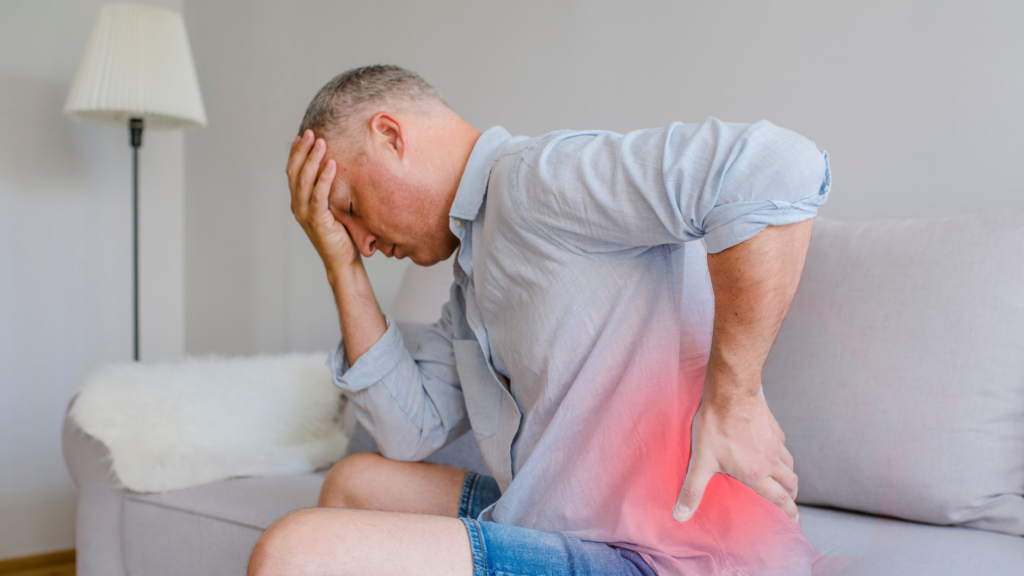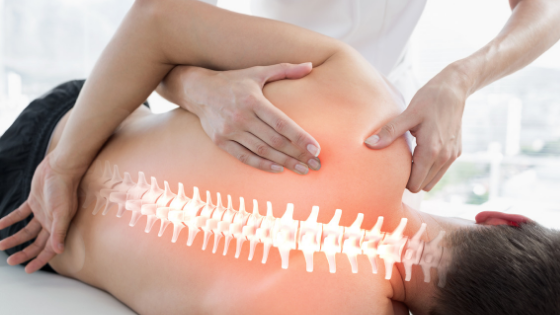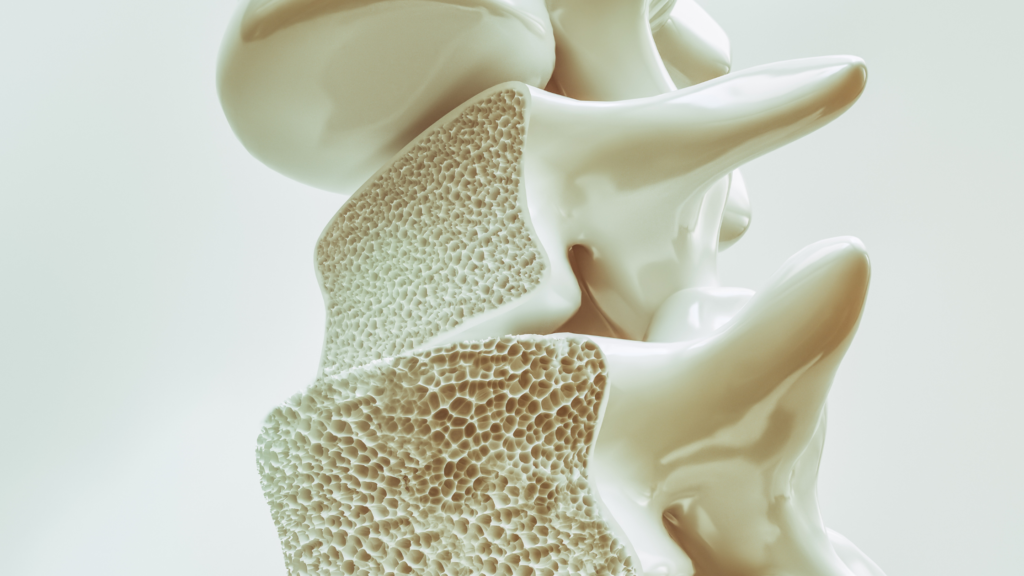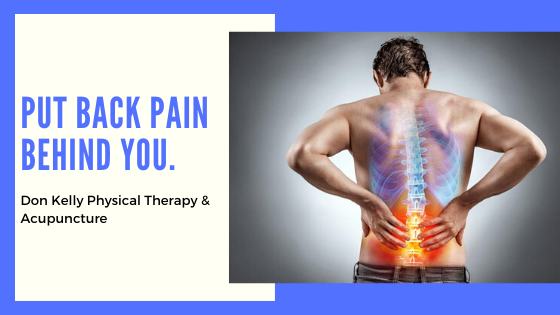What causes lower back pain?
How to manage lower back pain?
How to manage lower back pain?
Finding proven solutions and solid recovery for your aching back without medication and expensive medical bills.

Low back pain affects people of all ages, from children to the elderly, and is a very frequent reason for medical consultations. It can be acute, sub-acute, or chronic.
Though several risk factors have been identified (including occupational posture, depressive moods, obesity, body height, and age).
If you want to find the most effective treatment for your back pain, you need to first figure out the underlying cause.
The spine is a complex structure, so back pain could be caused by any number of reasons. Diagnosing the source of your pain can help lead you to the right treatment.
Anatomy of back and how it works:

The spine provides the structural framework to the entire body. The spinal cord runs through the middle of the spine and serves as the main highway of the nervous system by connecting the brain with other parts of the body.

The discs are pads that serve as “cushions” between the individual vertebral bodies. They help to minimize the impact of stress forces on the spinal column.
COMMON CAUSE OF CHRONIC BACK PAIN
Lumbar disc herniation. A herniated disc occurs when the soft, gel-like interior of a disc bulges or leaks outward, irritating nearby muscles, joints, or nerve roots. A herniated disc typically causes sharp, stabbing pain down the backs of the legs (sciatica), which is usually more pronounced than low back pain.
Lumbar degenerative disc disease. Wear-and-tear on the spinal discs that cause chronic low back pain is called lumbar degenerative disc disease. This condition typically causes chronic, low-level low back pain that intermittently flares up for a few days or weeks before returning to normal.
Osteoarthritis. Spinal osteoarthritis consists of wear-and-tear on the facet joints, causing excess friction when twisting or bending the spine. This friction can lead to bone spurs that pinch a nerve root and produce sciatica pain. Other symptoms include stiffness and tenderness around the joint. Osteoarthritis is more common in adults over age 60.
Spinal stenosis (sciatica). Narrowing of the spinal canal due to a bone spur, herniated disc, or another irritant can cause leg pain (sciatica). While back pain may occur with spinal stenosis, it is usually not as severe as the leg pain caused by nerve root irritation. Spinal stenosis is more common in adults over age 60.
Poor posture and unbalanced gait. Poor posture can put unnecessary pressure and strain on your spine. Overtime, this can lead to pain and damage.
Health and lifestyle factors that increase the risk of developing back pain include activity that puts exorbitant stress on the spine, such as heavy lifting, sudden impact, or prolonged standing or sitting.
BACK PAIN TRIGGER
If your back hurts but you don’t recall an injury, it may stem from
something you’re doing — how you’re sleeping, moving, and perhaps
even eating.
Back pain does not come out of the blue. Identifying your own
triggers—and trying to avoid them in the future—might be helpful if you
have a “trick” back.
Sit hunched. Do it too much, and it can flatten the natural curve of your spine and damage the cushioned disks between the bones. This can
lead to early arthritis and other problems. Gently stretch and move your head and neck in all 4 directions every half hour. To ease any
pain or spasm, try applying an ice pack or heating pad to the area.
Too many treats. Choosing the wrong foods too often can lead to
inflammation and leave out nutrients you need to be strong. Your body needs lean protein, whole grains, fruits and veggies, and healthy fats like those from avocado and salmon to build strong muscles, bones, and soft tissue in your back. Be sure to get nutrients like calcium, phosphorus, and vitamin D, too.
Sleep on your belly. It’s better not to do it, especially if you have a back problem. You’re more likely to toss and turn, which can strain both your neck and lower back. If you’re a belly sleeper and don’t want to switch positions, it can help to lay your head on a very soft pillow or none at
all to keep your neck in the right position.
Sit too long. It stresses your back muscles, neck, and spine. Slouching makes it worse. Sit straight in a chair that supports your back, and set the height so your feet rest naturally on the floor. But no matter
how comfortable you get, your back won’t like sitting for long stretches. Get
up and move around for a couple of minutes every half hour to give your
body a break.
Skip exercise. You’re more likely to have back pain if you’re not active. Your spine needs support from strong stomach and back muscles. So can everyday activities like climbing stairs and carrying groceries. Low-impact exercises like walking, biking, or swimming can help protect the disks between the bones in your spine. Make it a habit for most days. Don’t be a “weekend warrior” who overdoes it and gets injured.
Ride the wrong bike. Or just a badly adjusted one. It’s bad for your back if you have to hunch over to grab your handlebars the way pro cyclists do. (They train hard to do it safely.) You also may have back pain if you’re too stretched out or cramped upon your bicycle. A physical therapist can help you find a bike that’s a good fit and suggest exercises to help if you have lower back pain.
Wear high heels. You may overuse muscles in your lower back and harm your posture and your spine, especially as you age. If you wear them at the
office, you might bring a pair of walking shoes for your commute. Regular foot and leg stretches, like rolling your foot on a tennis ball, can help prevent pain and strengthen muscles.
PREVENTING BACK PAIN
Stretching and strengthening are key to preventing back pain.
STRETCH OFTEN. Doing the same thing every day can leave your muscles fatigued and more apt to strain. Stretch regularly to help improve circulation in those muscles and lower the risk of back pain and damage.
Increase Your Calcium & Vitamin D. Strong bones can help prevent osteoporosis. It’s one of the most common causes of back pain later in life, particularly for women. Keep the bones in your spine are strong by consuming plenty of calcium and vitamin D.

Wear custom orthotics. The body assessment image shows how imbalances in the feet can lead to knee rotation, pelvic tilt, and shoulder drop. These imbalances in the body can be caused by pronation and supination of the foot. These instabilities can lead to conditions such as
plantar fasciitis, knee pain, hip pain, back pain, and neck pain.
A properly aligned body will have symmetrical feet, level knees, pelvis, and shoulders. Wearing Custom Orthotics may help alleviate imbalances and conditions caused by those imbalances.
Strengthen The Lower Back. Doing exercises to strengthen the lower back can help alleviate and prevent lower back pain. It can also strengthen the core, leg, and arm muscles. (always consult your physio for proper evaluation and exercise plan)
For best results, an exercise program should stress on:
Increasing mobility of the back
Aligning the vertebrae
Increasing circulation
Decompression of the discs
Strengthening of the muscles
TREATMENT
If you have chronic back pain, please don’t hesitate to reach out. I have treated thousands of my patients with successful results over the last 20 years of my physio services.
- Identifying the type of back disorder you suffer from is the first — and most important — step in finding how best to treat it.
- Whether you’re experiencing back pain for the first time or you’ve suffered a relapse, seek the advice of an experienced, certified, and well-recommended Physiotherapist.
PUT THE BACK PAIN BEHIND YOU. I have a proven treatment plan which I guarantee results. Experience pain relief, solid recovery and get back to the activities you love.


